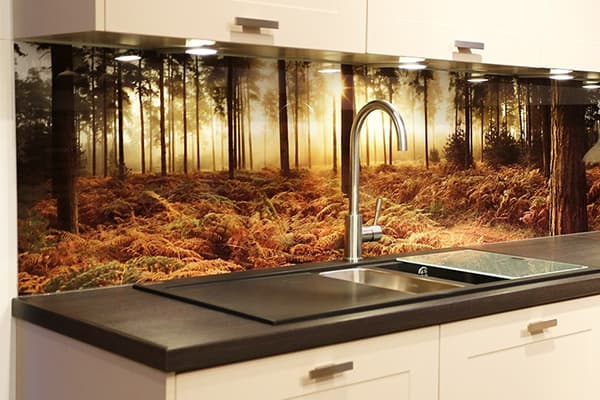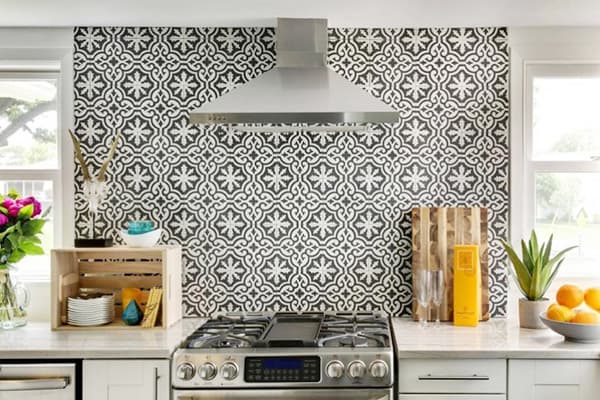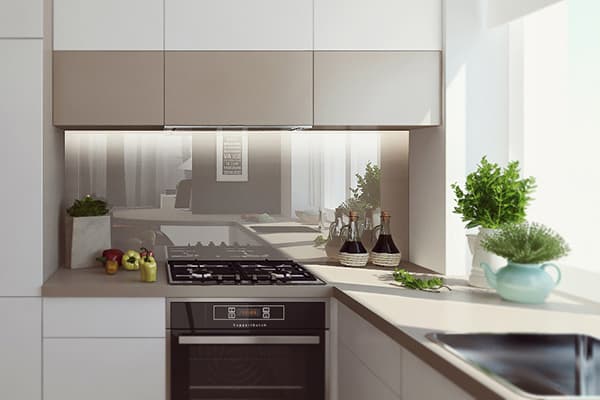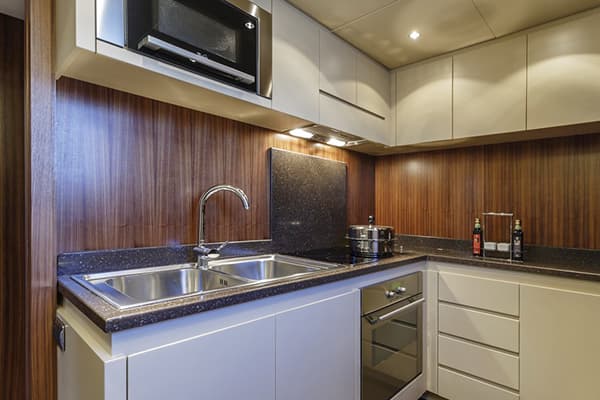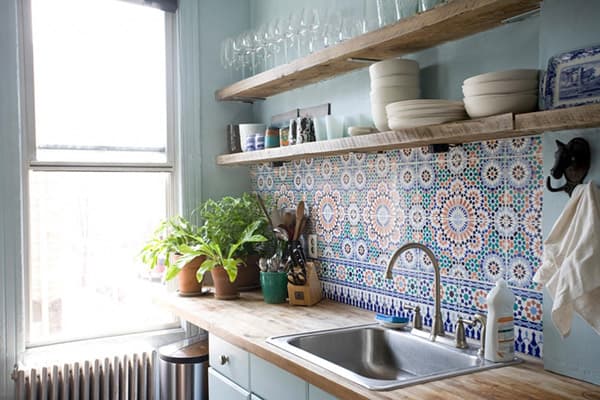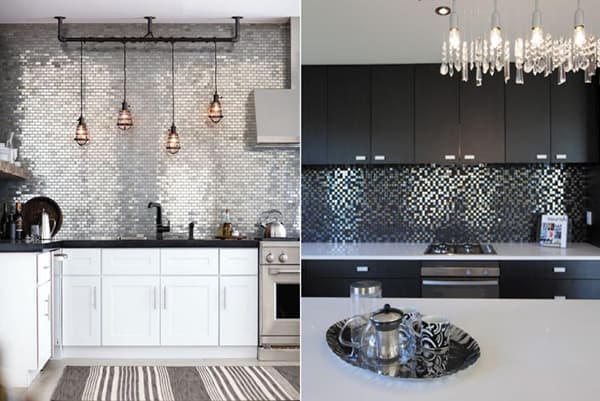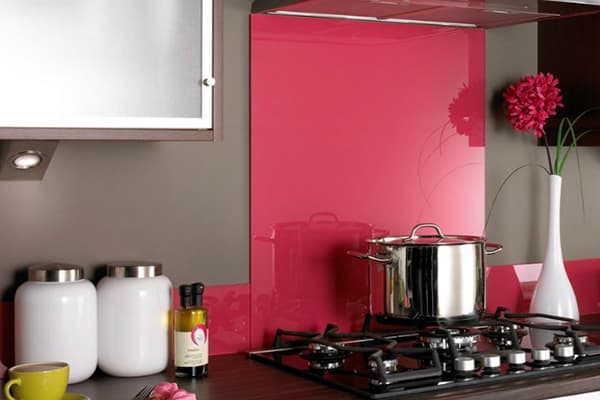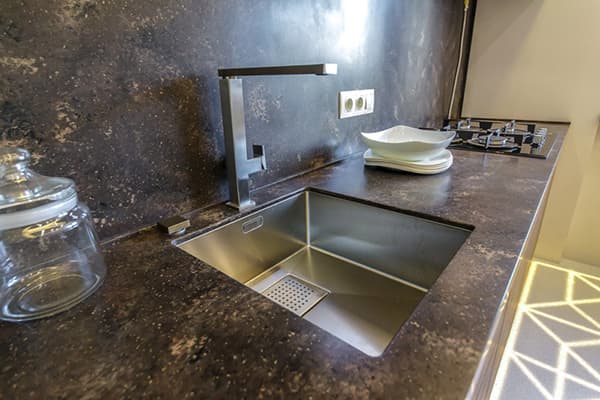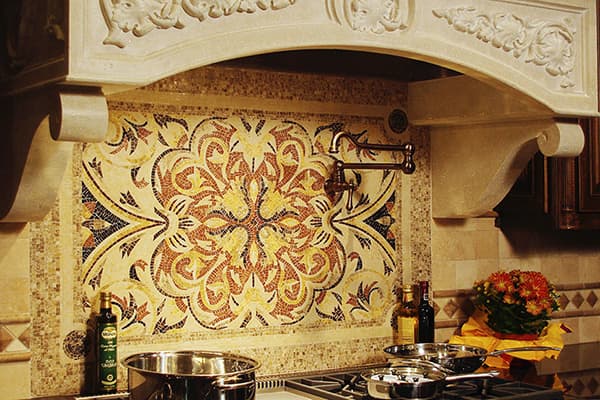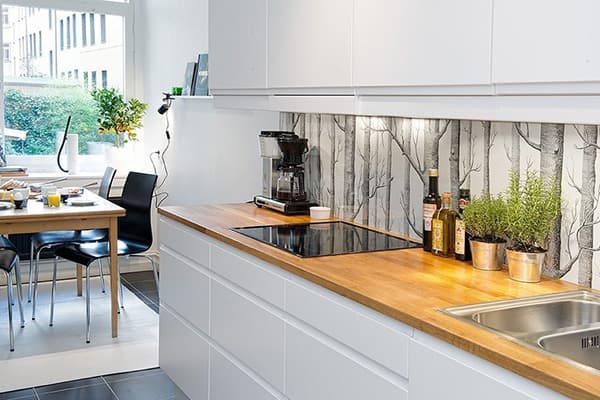How to choose a practical and stylish apron for the kitchen?
Content:
When choosing an apron for the kitchen, it is important to pay attention not only to the "picture", but also to the practicality of the material and design as a whole. First of all, this element of the interior should fulfill its intended purpose - to protect the wall between the work surface and wall cabinets from splashes of grease and water, not to absorb dirt and easy to clean. Smooth aprons made of ceramic tiles and tempered glass cope best with this task. More interesting in terms of design, but less practical types of stainless steel, plastic, wood, natural stone. We offer you to study the comparative characteristics of different aprons in order to decide which one is better to choose.
Main selection criteria
Many people choose an apron for the kitchen only on the basis of external signs - whether it corresponds to modern trends, whether it suits the kitchen set, like it or not. However, it is more correct to begin to consider the types of aprons with the materials from which they are made. The color and shape can be selected after. Fortunately, today technology allows you to apply all kinds of prints to almost any material, photo printing, gold spraying, imitate stone, play with color, etc.
The main criteria for choosing an apron for the kitchen are wear resistance and ease of maintenance. It is more practical to choose a material with the following characteristics:
- smooth, without grooves in which dirt can accumulate;
- shockproof;
- moisture resistant, not porous;
- resistant to temperature extremes;
- easily washable, immune to the effects of cleaning products (does not scratch, does not fade).
In addition, a quality apron should have a minimum of joints. Even better if it is made of a solid plate. If tile is selected, a moisture-resistant grout must be used. To seal the seams, special borders are used that are placed on moisture-resistant silicone or sealant.
Top 5 Types of Aprons
The most popular today are kitchen aprons made of glass (skin), artificial stone, plastic and MDF. Also classic is not out of fashion - ceramic tiles. All species are good in their own way. In order to understand which one is more in line with personal preferences and financial capabilities, we suggest that you study the comparative characteristics.
Glass
The kitchen apron is made of tempered glass - it is very durable and easy to clean. With it, you can implement almost any design solution. For example, using transparent glass, emphasize the beauty of wall decoration, or place a decorative film with photo printing, dry flowers, and children's drawings between two glasses. For decoration, you can choose frosted glass, textured, colored and even mirror. A lot of options.
Advantages of the glass apron:
- has an aesthetic appearance;
- many design variations;
- hygienic;
- durable
- lasting;
- heat resistant.
Disadvantages:
- easily soiled;
- expensive;
- relatively fragile.
MDF apron
A budget option, but at the same time quite practical. An apron made of MDF (medium density fiberboard) often comes with a kitchen set. You can also pick it up separately, the product is quickly manufactured and easily mounted. There are also many color variations: stone finishes, mosaics, tiles, drawings, photo printing, etc.
Advantages of MDF apron for the kitchen:
- low price;
- easy mounting and dismounting;
- sufficiently moisture resistant and durable;
- hygienic;
- universal, suitable for almost any stylistic solution.
The main disadvantage of such an apron is its low heat resistance. If the gas stove is standing nearby, in case of fire, the fire will quickly spread. The second minus of the material is its tendency to deform. It can not be called durable, the service life ranges from 5 to 10 years.
Ceramic tile
Tiled apron - a leader in practicality and value for money. Many will call this option old-fashioned - and will be wrong. Today there are so many types of tiles that it can satisfy the most demanding tastes: mosaic, textured, voluminous, with a metal coating, intricate ornaments, embossed (for example, under the skin), large and small, combined sizes. You can list endlessly. It’s better to move on to the advantages of a ceramic tile apron:
- hygienic - not easily soiled, easy to clean, does not absorb moisture and fat;
- heat-resistant - does not burn, does not melt;
- diverse - with it you can bring to life a lot of ideas for decor;
- durable - does not scratch, does not leave dents;
- durable - service life from 15 to 50 years;
- completely safe - does not accumulate static electricity, does not conduct current.
The disadvantages of the tile are few:
- the complexity of dismantling and laying;
- the need to align the wall before work;
- the presence of seams with honey tiles, which reduce hygiene and require additional care.
Plastic
The characteristics of the plastic apron are comparable to those of MDF. It often comes with furniture, it comes in a variety of shapes and colors, and is easy to install. There are several types: carbonate glass, PVC panels, vinyl, lining and laminate. But if the first two materials are considered relatively durable, hygienic and safe, then the rest to use for installation next to the hob is just reckless. Not only can they instantly flare up, but they can easily deform due to temperature changes, and when heated they release toxic substances into the air.
Liquid artificial stone apron
One of the most expensive aprons for the kitchen. Its undoubted advantages are the ability to create a single composition with a countertop and sink and easy restoration. Scratches or other defects are repaired by the same putty of which the apron is made. It is made from acrylic or quartz agglomerate. The first is essentially plastic, flammable and easily deteriorates. But the quartz agglomerate really deserves attention. He is afraid of only one thing - bleach (loses color).
Advantages:
- hygienic;
- lasting;
- durable
- "Dear" by sight;
- heat resistant;
- easily restored;
- can be connected to the tabletop without a seam.
Disadvantages:
- high price;
- mounted only by specialists;
- poor choice of colors.
Luxury and unusual aprons for the kitchen
Aprons from the above materials are universal, with them you can make any design in the kitchen. But for some this is not enough.
If you want something unusual, even to the detriment of practicality, you should choose one of the following options:
- marble;
- from a natural stone;
- from a natural tree;
- from stainless steel;
- from pebbles;
- from a cut of brick;
- in the form of a board covered with slate paint.
5 design tips
Choose an apron design based on the color and style of the kitchen. Not every material will fit into a thematic interior. For example, for a kitchen in the Provence style, skins and plastic are not the best options, they are more suitable for hi-tech, modern or eco style. As for color solutions, the apron can be selected to the kitchen set, to the wallpaper (+ - 2 tones) or to make the main accent from it (in the form of a complex composition or picture).
What other designer tips should you consider when choosing?
- A bright apron requires space. At the same time, it is important that it resonates with the color of minor decorative elements (towels, skirting boards, accessories).
- Mirrored surfaces make the kitchen cold. In addition, not everyone is pleased to watch themselves while cooking.
- The half-gloss looks best of all - it is not so easily soiled, it gives juiciness to color.
- White, beige, milk, tea rose color and champagne color are considered neutral, such aprons fit perfectly into any design.
- Aprons that are gray and mottled with a pattern are more practical than others; spots are least visible on them.
The kitchen is a place where delicious dishes are prepared and the whole family gathers. It is important to make it functional, safe and attractive in appearance. There are many practical materials for finishing an apron, both cheap and expensive. If there are difficulties in choosing a color, a neutral palette or a glass transparent screen will come to the rescue as a protection.
